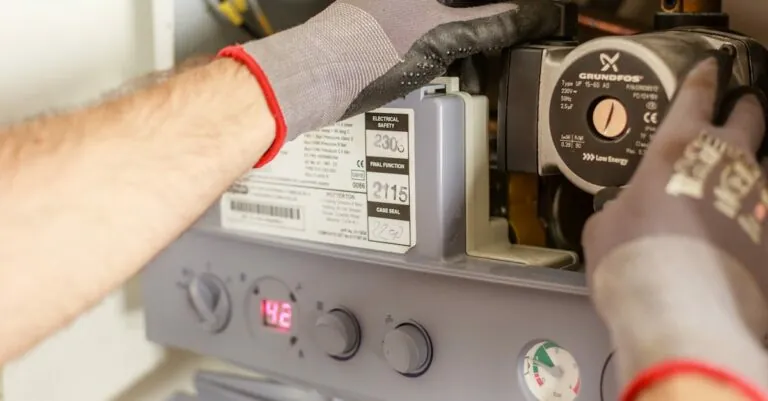Ever found yourself in a charming Parisian café, sipping espresso, and suddenly realizing you don’t know how to greet the locals? Fear not! Mastering “Hi, how are you?” in French is easier than finding the perfect croissant. This simple phrase opens doors to delightful conversations and maybe even a few new friendships.
Table of Contents
ToggleUnderstanding Greetings in French
Understanding French greetings enhances interaction with locals. Simple phrases foster connections and create memorable experiences.
Common Ways to Say Hi
Several ways exist to greet someone in French. “Salut” serves as an informal hello among friends and acquaintances. “Bonjour” represents a polite greeting used during the daytime. “Bonsoir” applies during the evening hours. Employing these phrases helps establish a positive tone in conversations. Utilizing the appropriate greeting reflects cultural respect and friendliness.
Introducing Yourself in French
Introducing oneself correctly in French facilitates smoother conversations. A common phrase includes “Je m’appelle,” meaning “My name is.” Following this, stating one’s name directly offers clarity. For instance, “Je m’appelle Marie.” Including additional information, such as where one is from, enriches the introduction, e.g., “Je viens des États-Unis” translates to “I come from the United States.” These introductions contribute to engaging dialogues.
How to Say “Hi, How Are You?” in French

Saying “Hi, how are you?” in French is simple and enhances interactions. The direct translation is “Salut, ça va ?” This phrase works well in casual conversations.
The Phrase Translated
“Salut” serves as an informal greeting. “Ça va ?” means “how are you?” Combining both offers a friendly approach. This phrase effectively connects speakers and invites responses. For example, responding with “Ça va bien, merci !” conveys, “I’m well, thank you!”
Formal vs. Informal Usage
Understanding the difference between formal and informal contexts is crucial. In casual settings, use “Salut, ça va ?” with friends and peers. For formal situations, opt for “Bonjour, comment allez-vous ?” This version shows respect and politeness. Adjusting greetings based on the context establishes a suitable tone. Using appropriate phrases reflects cultural awareness and facilitates better connections.
Cultural Significance of Greetings in French
Greetings in French culture play a vital role in daily interactions. They establish connections and reflect respect.
Importance of Greetings in French Culture
Greetings serve as a social lubricant in France. Using the right expression can open doors to meaningful conversations. Speaking the language fosters a sense of community. Establishing rapport through greetings is essential, especially in social settings. Familiar phrases like “Salut” and “Bonjour” can transform a brief encounter into a pleasant exchange. Culturally, the French value politeness, making proper greetings crucial for positive engagements.
Contextual Differences in Greetings
Context drives the choice of greetings in France. Informal settings call for words like “Salut,” while formal interactions require “Bonjour” or “Bonsoir.” The time of day influences the greeting style. Switching between informal and formal greetings demonstrates awareness of social norms. Using “Ça va?” indicates familiarity, while “Comment allez-vous?” expresses respect. Awareness of these nuances enhances social interactions and deepens understanding of French culture.
Tips for Practicing French Greetings
Embracing French greetings enhances social interactions and cultural experiences. These strategies help with proficiency and confidence in daily conversations.
Language Learning Resources
Utilizing online platforms like Duolingo or Babbel aids in learning basic greetings and phrases. Mobile apps often provide interactive exercises, promoting retention. Additionally, language exchange websites like Tandem offer opportunities to practice conversational skills. French podcasts feature native speakers, immersing learners in pronunciation and everyday usage. Books focused on conversational French expand vocabulary and provide insights into cultural contexts. Multimedia resources like YouTube tutorials also break down phrases and proper intonation, making practice enjoyable.
Engaging with Native Speakers
Conversing with native French speakers builds fluency and understanding. Participating in local language meetups encourages practical engagement. Utilizing social media platforms can connect learners with French-speaking communities. Practicing through video calls with fluent friends allows for real-time feedback and adjustment. Informal settings, such as cafés, provide opportunities to try greeting locals directly. Using the learned phrases in daily interactions promotes familiarity and confidence in the language. Each exchange enriches linguistic competence and cultural appreciation.
Mastering the phrase “Hi, how are you?” in French can significantly enhance interactions while traveling or living in French-speaking areas. It opens doors to deeper conversations and connections with locals. Understanding the nuances of greetings like “Salut” and “Bonjour” demonstrates respect for the culture and fosters positive exchanges.
By practicing these phrases and engaging with native speakers, anyone can build confidence in their language skills. This not only enriches their travel experience but also encourages a greater appreciation for the French language and culture. Embracing these simple yet powerful greetings can lead to memorable moments and lasting friendships.





